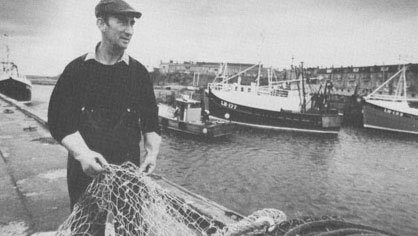9 December 2008
One of the breakthroughs of the last ten years has been the recognition by ICES scientists and policy-makers that fishermen hold a huge reservoir of practical knowledge about stock trends.
One of the breakthroughs of the last ten years has been the recognition by ICES scientists and policy-makers that fishermen hold a huge reservoir of practical knowledge about stock trends, the effect of fisheries management measures, the interaction of economics and conservation and local marine ecology.
The problem has been the difficulty in “capturing” that knowledge in a way that can be used by ICES scientists to strengthen their stock assessments and also in a form that policy-makers can use to design conservation measures that are coherent and deliver their objectives in a way that runs with the grain of the industry rather than against it.
The main obstacle to routinely using fishermen’s knowledge has been its dismissal as interesting but “anecdotal” or “unsystematic”. To address this problem and amongst other initiatives, the NFFO has been developing annual fisheries reports that will put fishermen’s and industry knowledge on a more systematic footing so that it may both be integrated into stock assessments and inform the positions of policy-makers in Defra and the European Commission.
In a ground-breaking project, partly funded by the Defra Fisheries Challenge Fund, the NFFO in collaboration with the Cornish Fish Producers Organisation and Seafood Cornwall, have been piloting the first annual fisheries reports. These are specifically designed to capture detailed knowledge held by fishermen and put it in a format that means it can be used by scientists and policy makers. The idea is that in time, each NFFO member producer organisation and non-sector regional committee would produce an annual fisheries report. These would then be updated annually to produce a time-series that would document the evolution of local fleets and fisheries in a way that the information could be taken into account. The main method used to prepare the reports is through structured interviews with a rage of fishermen. The focus of the annual fisheries reports are at the regional level.
ICES acknowledges that it cannot produce analytical assessments for around 60% of the stocks in Community waters, mainly because of lack of data. The reaction of the European Commission to the weakness of the stock assessments is to apply a precautionary approach. This often means that TACs are reduced, irrespective of the actual conservation status of the stock simply because of lack of knowledge. The fishing industry therefore has a huge interest in providing data that will improve the quality of the stock assessments; annual fisheries reports aim to at least partially fill that gap.
Other ways of capturing fishermen’s knowledge complementary to annual fisheries reports, such as the annual fishermen’s questionnaire on stock trends overseen by the North Sea RAC are also supported by the Federation.
The first pilot reports are nearing completion and it is hoped to progressively expand the number of fisheries for which a report will be prepared. The reports will be careful not to duplicate sources of information but uniquely, to capture the information held by the industry in a form that is most useful
NFFO 6th December 2008.

